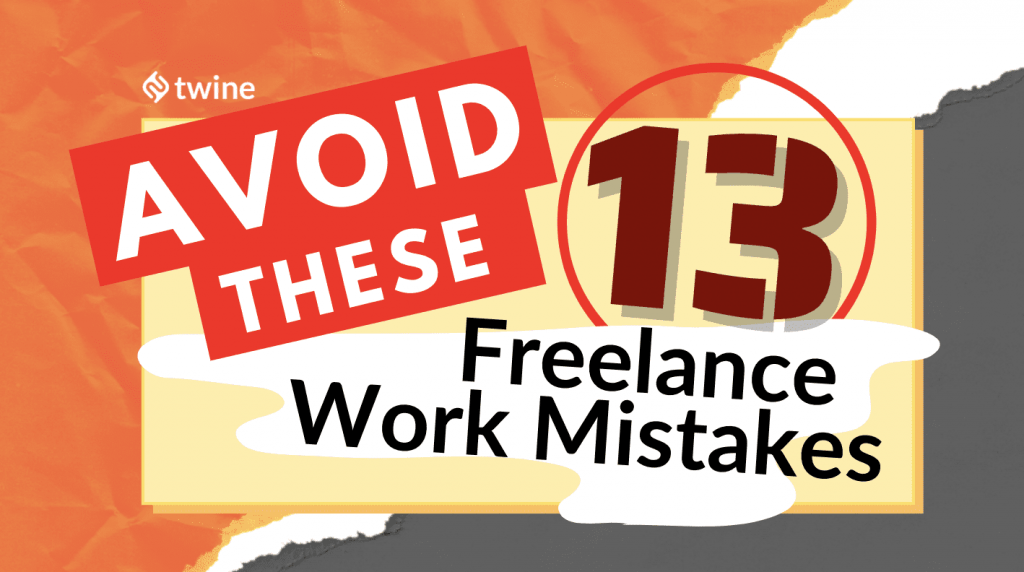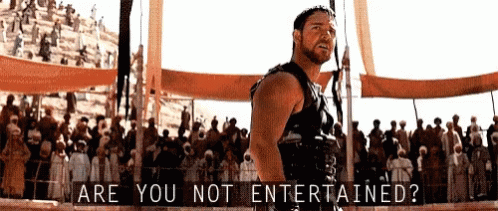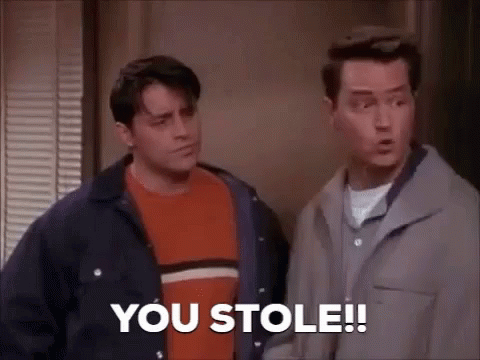
Good gourd, freelance work mistakes!
Picture this: You put all of your hard work, effort, and focus into a project, only to receive a grumpy response from your client. Did you make one of those classic freelance work mistakes?
You don’t understand where it’s come from! Then, you realize that you actually sent it to the wrong person, at a completely different company… Doh.
That same gut-wrenching feeling can happen at any time when you’re a freelancer, even if it’s not such an epic fail as above. It’s difficult to predict how a client will react to certain situations, but you may be making decisions that have been proven to upset, and quite frankly, annoy a client. We like to call them ‘freelancing work mistakes’.
In this epic guide to freelancing, we’ve listed 13 of the most common work mistakes that any type of freelancer could make – and how to avoid them (whilst keeping your sanity):
Freelancing Work Mistakes:
Taking on too much work
Ever experienced the feeling of overwhelm? The chances are, you’ll feel it more often than you’d like to admit. Freelancing is tough and overwhelm is rife, but thinking about why you’re feeling that way can help to shed some light – and show you which areas of your business need improving.
Overwhelm doesn’t just show in your mood. A lack of focus, motivation, or determination will show through in your work, potentially causing you to make one of those classic work mistakes, and send your worst work to a dream client.
Not a good way to make cash.

One of the main sources of overwhelm is taking on too much work. Hustling is now seen to be essential for running a freelance business, but sitting by your desk for 16-hour days isn’t gonna be good for anyone.
Limit yourself to a certain number of projects, or clients, in a specific time frame. This way, you can be focused on creating your best work – not sending last-minute pieces over to someone who’s paying for quality.
Having only one client as a source of income
Often referred to as ‘putting all of your eggs in one basket‘, you might find yourself strapped for cash if you have one client as your entire source of income.
As a freelancer, you don’t always have the security of a full-time job. Clients can disappear at the drop of a hat, and your single contract may be the only thing that keeps the heating on.
But what happens when that contract comes to a close? You’re back to square one, trying to find new clients before you end up broke.
Now, you might be thinking that this point is contradictory to the one above. “How on earth can I find the right balance of clients or projects?”, I hear you say.
The key is trial and error, and a little bit of maths. Think about:
- How many hours you can dedicate to work, each week
- How long the typical project takes you to complete
For example, Illustrators might find that they can dedicate 30 hours per week to their freelancing work, with each project taking them approximately eight hours to complete, from start to finish. Rounding that up to 10 hours per project to cater to any unexpected time additions, they might decide to work with three clients from week to week.
Clients that ghost
If you ask a freelancer to name one of their least favorite things about their job, they might answer with one word: uncertainty.
Although contracts can be put into place to help avoid this, clients can still let you down at the last minute. You can spend hours putting together a proposal and detailed quote for a prospective client, only for them to disappear off the face of the Earth.

To avoid the chances of a ghosting client, try to keep them on their toes. The person you’re discussing the project with may forget about your conversation or become bored when reading your emails. If that happens, they might move on to prospecting another freelancer to help with the job. I like to prevent this by sending emails with a plan of action.
You can do this by:
- Listing the things you’re going to work on next (a quote, proposal, etc)
- Asking a question – i.e. “Would you prefer me to do this, or this?”
- Showing interest by saying something like “Tell me more about…”
Did you know that you can prevent ghosting clients by using #Twine? Share on X
Agreeing to a job that wasn’t what you expected
Ever found yourself working on a freelancing gig and thinking, “Why did I agree to this”?
Similar to how overwhelm affects you as a freelancer, you might lose focus and passion for your job if you’re working on jobs that are out of your remit. Agreeing to a job that wasn’t what you expected can happen for a variety of reasons, with the most common being that you didn’t ask questions before starting the work – typical.
Some freelancers use a form of marketplace to find their clients. It’s one of the safest ways to get hired for a project while being fully aware of what it entails, without making those easy-to-make work mistakes. That’s because businesses need to list their exact requirements before hiring a freelancer to do it.
A freelance web designer would scout these marketplaces for job descriptions that list this specifically. This way, they don’t end up applying for a job that isn’t within their specialty and can focus on doing the type of work they enjoy.
The client stealing your work, without paying
There aren’t many things more frustrating than a client ghosting after they’ve sent your work. It’s hard to predict the likelihood of a client doing this, but it’s often too late to do anything by this stage.

Again, using some form of a marketplace for freelancers can help to prevent this from happening. Having this software can act as a middleman between yourself and your clients, and protect you against companies that suddenly disappear once your work has been sent.
When using Twine, you’re able to send files through our system. They’ll only be accessible to your client once they’ve sent payment for the project, always making sure that you’re protected and paid for your work.
“The client is always right” mindset
As freelancers, our aim is to make our clients happy. We want everyone that we work with to love us. In the future, that could lead to referrals, new clients, and even more profit. Having said that, honesty is often the best policy.
Another one of those freelancing work mistakes you shoudl be aware of, is having the mindset of believing that your client is always right. Granted, they might be knowledgeable about their industry, but they’re hiring you: an expert, to do something for them.
For example, if you’re a freelance videographer, a client may include “the welcome sequence is too long” as part of their feedback. If you genuinely disagree with their decision and have specific reasoning behind why tell them. They’ll appreciate your honesty, and should respect the fact that you’re the expert in videography – not them!
Failing to set boundaries
Freelancers are people, too. You can’t be expected to work through the night on a project, but you may find yourself on the receiving end of a nasty email if you fail to set boundaries from the outset.
Back when I started freelance writing, I squeezed work in wherever I could. At the time, I was working a full-time job simultaneously, but I didn’t let my clients know. Instead, I’d use my evenings and late nights to catch up on work – even sending emails at 12am.
The issue with that? My clients expected it. I once let myself have an evening off and because my client had become so accustomed to my late-night emails, they panicked when I didn’t immediately respond. I woke up to a series of emails where they asked to back out of the project we were working on, but their fear could’ve been avoided if I set boundaries at the start of our working relationship.
Some boundaries you may want to consider include:
- Having ‘office hours’ and only replying to emails within this period
- Setting communication guidelines, so you don’t get woken up at 12am by a client calling you on Skype
- Charging a rush fee for clients who require a faster turnaround
You don’t follow-up
Our clients are human, too. They’ve got their own lives to run and can forget about your email within minutes of receiving it. It’s normal – especially when they’re working within a larger company.

Don’t forget the power of a follow-up email!
If you haven’t received a response to your sales pitch, project quote, or proposal, remind your contact about it. Following up will remind them about your email, push it to the top of their inbox again, and prevent yourself from losing a job through a forgetful client.
You repeatedly miss deadlines
There’s no beating around the bush with this one: freelance jobs need to be completed on (or before!) the deadline that’s been set. No matter whether it was yourself or the client who set the important date, it’s essential that do your best to stick to the agreement.

Repeatedly missing deadlines shows a lack of professionalism, and is one of the biggest freelance work mistakes. Your empty promise to get work completed could cause a huge disruption to their business.
For example, if you’ve failed to hit the deadline to complete your web development project, it could cause the company you’re working with to push back its website launch. Their marketing strategy and sales could be affected by this, and your promise affects the most important thing for a business: profits.
Failing to do so also limits your chances of receiving a glowing testimonial, or the chance of being referred to another business owner.
Whilst I say all of this, remember that you’re human, too. As much as you can try and predict what’s going to happen in your personal life, there may come an emergency whereby you’re physically incapable of hitting the deadline.
In this case, give your client as much notice as possible. They may be more understanding if you’re honest with your reasoning.
Struggling to hit a deadline for your project? Tell your client ASAP to avoid a major #freelance mistake Share on X
Your portfolio isn’t up-to-date
Think about the last time you bought something online. Did you search for reviews for the product, or purchase it without any background knowledge? Clients will always choose the first option when hiring a freelancer, except they have even more pressure because they’re hiring you to get results.
Portfolios are a freelancer’s bread and butter. Think of them as your right arm: you can’t do much without one. They show potential clients real examples of your work, which gives them trust to invest in you to grow their business. This is a major freelance mistake!
But, many freelancers fail to keep their portfolios up-to-date. This means:
- You look like a hobbyist; not a professional
- You’re giving the impression that you’ve been ‘out of action’ for a while
- You run the risk of not showing off your best, most-recent work
Let’s take a graphic designer, for example. They might’ve just finished creating an awesome logo for a client, but they’ve forgotten to feature it in their portfolio. How would a prospective client know that you’ve got a proven track record for this if it’s not included for them to see?
You’re an over-sharer
You see those old images on your Twitter profile that show you drunk, in a bathtub at a Halloween party last year? As much as I’d personally love to see them, it could give your client the wrong impression.
As many as 70% of employers (including those who hire freelancers) have admitted to snooping a prospective employee’s social media profiles before hiring them. Half said they look for a professional online persona, so it could be a huge freelancing mistake if you’ve got a tendency to over-share.

(If you don’t trust your friends not to tag you in photos from your night out on Facebook, consider adding clients to a list of Acquaintances. Then, set your default posting setting to “Friends Except for Acquaintances” to avoid any chances of clients seeing your drunken antics!)
You don’t ask for referrals
It’s been shown that the easiest way to get a freelancing job is through referrals, not doing so is a classic freelance mistake! Over 34% of freelancers have expressed their love for getting referrals, but you may be making a huge freelancing mistake if you’re aren’t asking for them.
Making connections with other freelancers is an awesome way to start this process. Follow similar creative freelancers on Twitter, interact with their Facebook pages and comment on their blog. Once you’ve built that friendship and had a few friendly conversations, ask if they’d be willing to refer any inquiries that weren’t a fit for them, to you.
I only realized how lucrative this was until I had someone do it to me. A fellow freelance writer became my friend online and because he wrote in a different niche to myself, I referred him to clients who were looking for something I didn’t offer. He got the business, and I did my job of pleasing the client by passing them onto someone who could better fit their needs.
It’s a win-win all around!
Don’t forget that you can find new #freelancing clients through referrals! Here’s how to do it
You don’t treat it like a business
Even if your freelance activity is a side-hustle to make a bit of spare cash alongside your full-time job, our final freelancing mistake is not viewing it as a business. It’s common for new freelancers to still feel like an employee, but making the mindset switch from ‘employee’ to ‘business owner’ can have a sizeable impact on your success.
Why? Because having an employee mindset gives your clients the gateway to rule the roost. They won’t take your advice seriously, and you may find that you’re lacking the one thing you love about being a freelancer: creative control.
Here are some simple ways to start treating freelancing as a business:
- Create a routine or schedule to know what you’re focusing on
- Market yourself effectively so clients come to you (particularly on social media)
- Have clear processes for the way you work
So, how do you avoid these freelancing work mistakes?
As you can see, freelancing is a tough gig. It often consumes your life, which is why you’ll need to find a way to correct your mistakes, should you make any.
Ready to stop making these freelancing work mistakes?

Here at Twine, we have a community of freelancers that work together in one single marketplace. We’ve put together a unique system for finding jobs and working with clients, helping you to conquer these common freelance work mistakes and become the successful business owner you want to be.
Eliminate freelance work mistakes, what are you waiting for?! Join the Twine community today and browse jobs that you’re a perfect match for – and put your new knowledge to the test.



